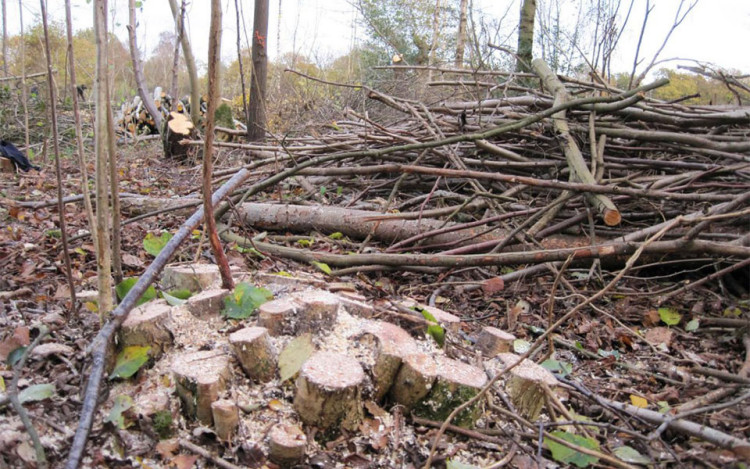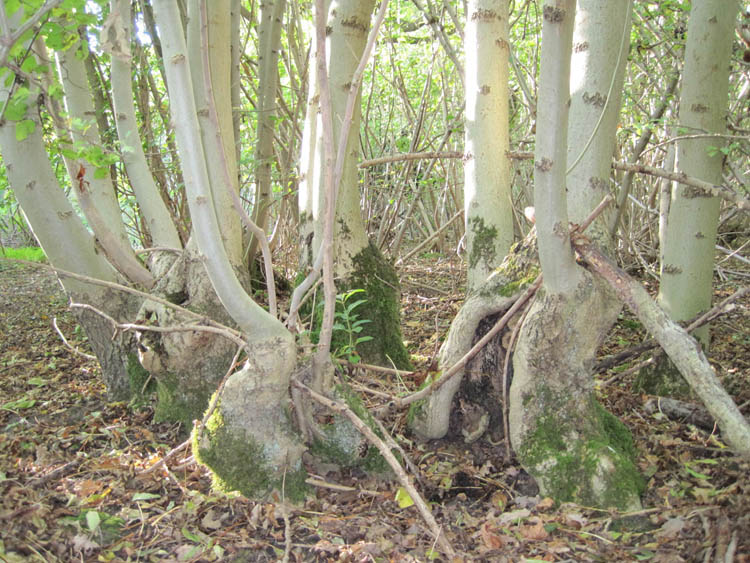Coppicing is an ancient form of Woodland Management, comprising cutting broadleaf trees and shrubs to the stump in winter when the sap has left the wood and the tree is dormant. This stimulates re-growth in the spring and is often vigorous, producing multiple new stems from the stump (known as the coppice stool) for future harvest. The woodland is divided into numerous areas called coupes, cants, panels or fells. Trees are cut on a rotation ranging from 5 to 30 years, depending on the species and the size of timber required. A number of coupes may be cut each year until the rotation is complete.
Coppice woodlands are particularly important for wildlife as they contain a mixed age structure with areas of young woodland next to more mature stands. This mosaic provides more transition zones between habitats which ultimately increases biodiversity. The regular rotation also benefits many wildflowers, as the floor is exposed to sunlight and seed laying dormant can germinate. This in turn encourages a wider array of insects, mammals and associated bird populations.
Coppicing tends to extend the life of the tree and there are some examples of ancient ash coppice stools in Bradfield Wood NNR that may be over 1000 years old (Oliver Rackham)
Most native broadleaf trees and shrubs coppice well. The most frequently coppiced species are (in no particular order): Alder, Ash, Birch, Field Maple, Hazel, Lime, Oak, Sweet Chestnut (although this is not strictly native) and Willow, but you can also coppice Beech, Blackthorn, Cherry, Dogwood, Hawthorn, Holly and Poplar although their re-growth is not quite as vigorous.
Unlike other forms of woodland management, coppicing is totally sustainable and carbon neutral. Any carbon footprint from wood burned is neutralized by the uptake of carbon in the re-growth.


